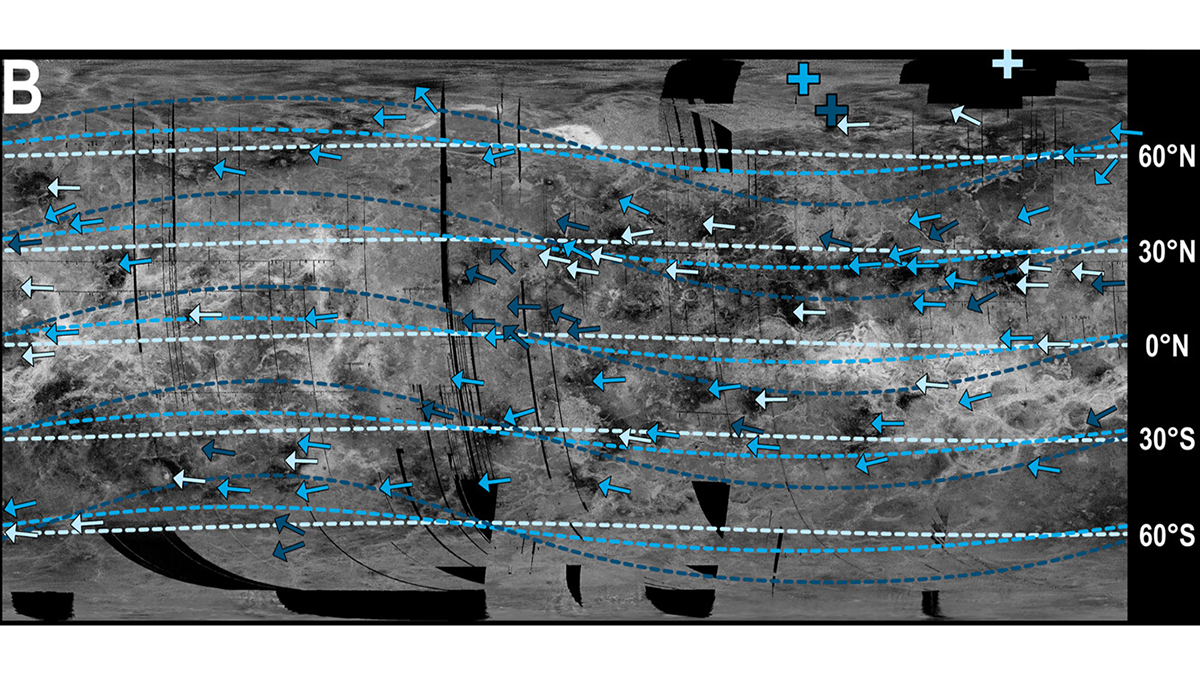Editors’ Highlights are summaries of recent papers by AGU’s journal editors.
Source: AGU Advances
Only big impactors can punch their way through Venus’s atmosphere. When they do, the impact lofts dust which is then blown downwind as it drifts back to the surface. The resulting parabola-shaped dust deposits are unique to Venus and indicate the wind direction at the time of impact.
In a clever study, Austin et al. [2025] show that the parabolas that appear oldest and most degraded depart most strongly from the expected wind direction. This suggests that wind directions on Venus have changed over time – but why? Because of Venus’s slow spin, its rotation axis is unstable. The authors suggest that the parabolas are recording winds from a period when Venus’s rotation axis was somewhere else. Future Earth-based or spacecraft observations might be able to test this theory.
Citation: Austin, T. J., O’Rourke, J. G., Izenberg, N., & Silber, E. A. (2025). Survey and modeling of windblown ejecta deposits on Venus. AGU Advances, 6, e2025AV001906. https://doi.org/10.1029/2025AV001906
—Francis Nimmo, Editor, AGU Advances

